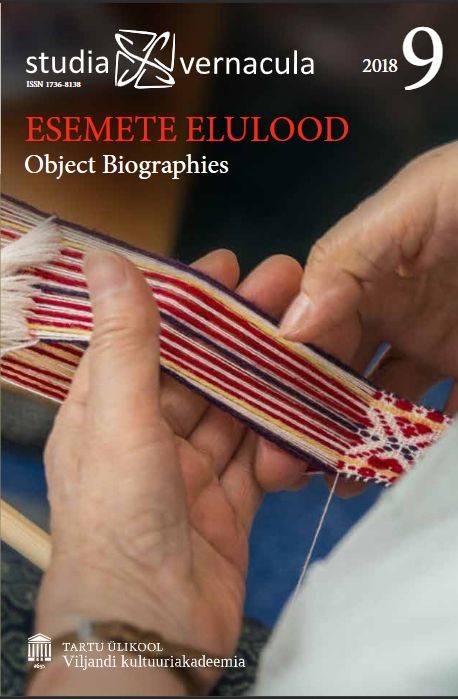See paeluv pael. Ühe preestrirüü taastamise lugu / This striking stripe. The story of the restoration of a set of priest’s vestments
DOI:
https://doi.org/10.12697/sv.2018.9.126-149Abstract
My article recounts the story of the restoration of 19th century priest’s vestments in the Slavic Orthodox style for use once again. The garments were dateable from the lily stripes known to date from the late 19th century (Säppi 2008), as well as archival material from the National Heritage Board (ERA11152). My article will also present an overview of the parts of Orthodox vestments used in Estonia today, as well as the stripes found on the garments and their meaning.
To determine the age, origin, and technological characteristics of the making of these vestments, three analogous sets (priests’ vestments and veils from Riisa Orthodox Church Museum of Finland, Hiiumaa, and Kohila (Angerja)) were studied and church supplies catalogues from the Tsarist era (1907, 1910/11, 1911, and 1912) were examined. These vestments were also most probably made in Russia. I restored the phelonion (the large conicalsleeveless garment worn over all other vestments), the zone (the cloth belt worn over the epitrachelion), and the epimanikia (cuffs), and reconstructed the missing epitrachelion (the priestly stole worn around the neck) based on these analogues. Studying other similar sets enabled me to choose suitable materials for restoration, although finding fabrics identical to the original proved impossible. A certain amount of modernisation was also prompted by the fact that the vestments were meant to be worn, rather than be placed in a museum. My chief goal in restoring the vestments was to ensure that it was visually as close as possible to the original and that it was characteristic of the time it was made. First, I carried out a detailed study of the processes used for sewing the items, then unsewed all unusable parts. This further reinforced the observations made about the technology.
I decided not to use linen reinforcements, as they would make the phelonion heavy and uncomfortable to wear. While linen can easily be pressed into shape, it loses its shape just as quickly when wet. And given the storage conditions typically found in churches, it is worth remembering that linen fabrics also absorb moisture. My study of textile items used in churches have shown that old priests’ vestments have often developed mould growth under the linen reinforcement. Modern synthetic materials were used instead of golden glacé; the old binding was also replaced with modern one. This could also have been made by hand from velvet, but I found this to be too labour-intensive and This striking stripe 149 time-consuming. Since no golden brocade of a similar pattern was available, I made the cuffs, zone, and epitrachelion from velvet, following my analogues here in the choice of fabric. I used old technologies for the sewing, utilising a sewing machine from the same era for attaching the stripes. The restored phelonion is similar in appearance to the original one, while the cuffs (epimanikia), zone, and epitrachelion are closer to the analogues and include new details, namely crosses of tatted lace.
The restored vestments were meant to be the most solemn red (Easter vestments), but the result was closer to purple, the colour of martyrs. The appearance of liturgical garments can be better understood if we recall the words of
Jesus in the Scriptures: ‘The kingdom of God is come nigh unto you’ (Luke 10:9). Thus, the dignified and beauteous liturgical garments of the Orthodox Church symbolise the presence of the Divine Light on Earth.
Keywords: ecclesiastical textiles, priests’ vestments, liturgical textiles, sacral textiles, border stripes on orthodox liturgical vestments

